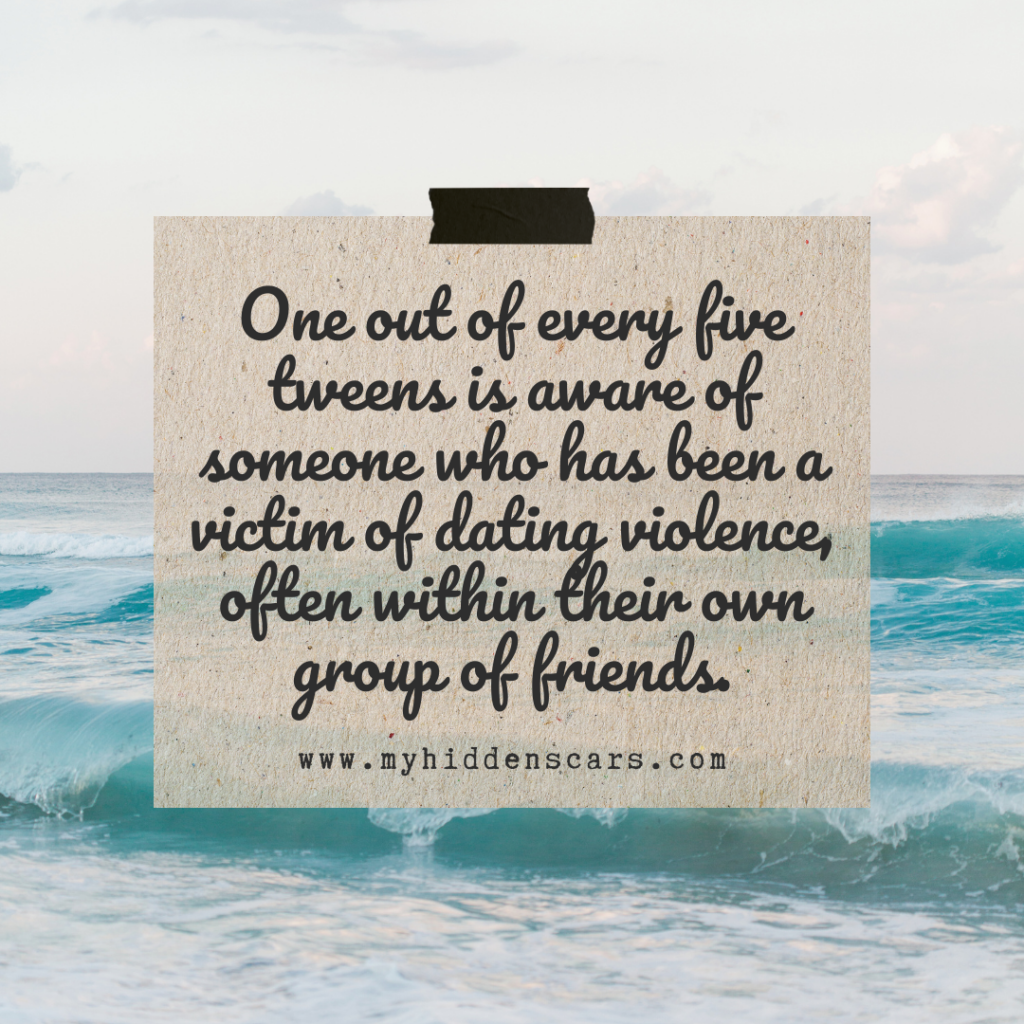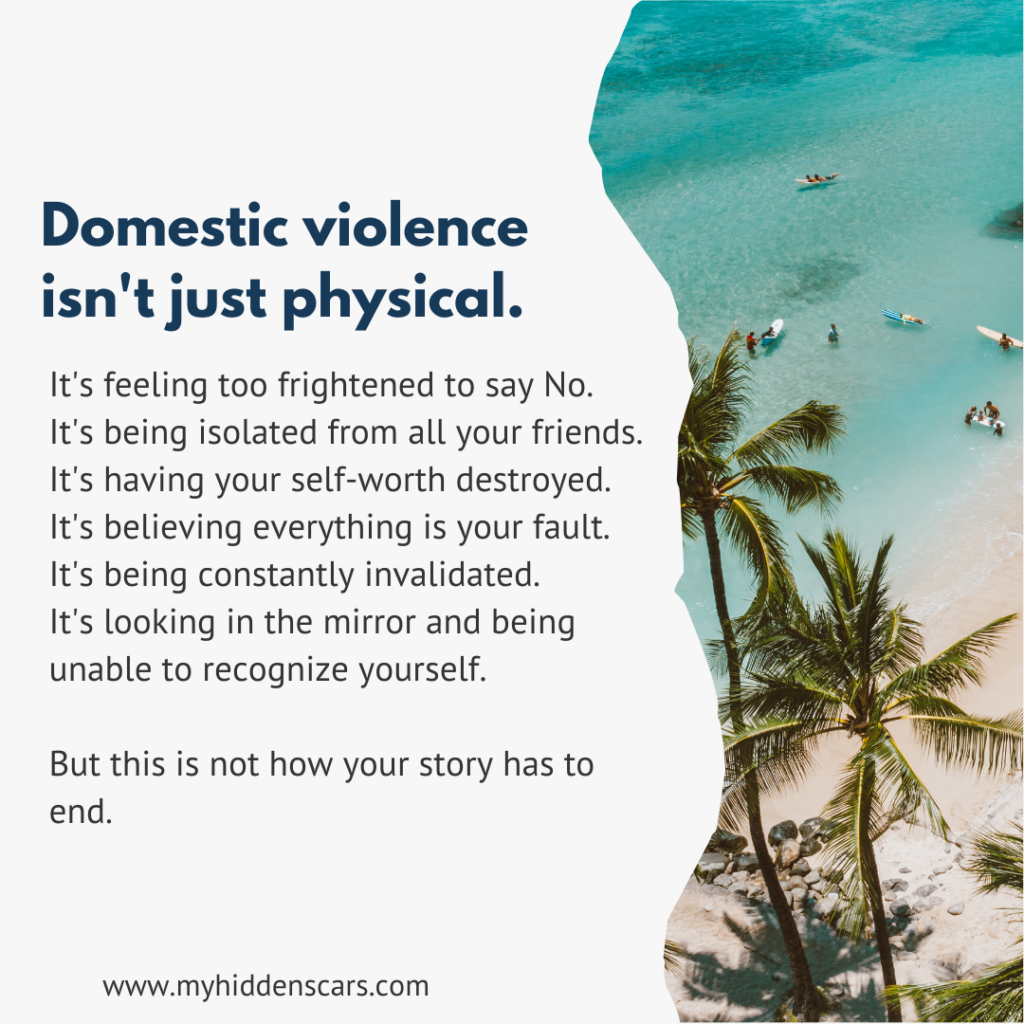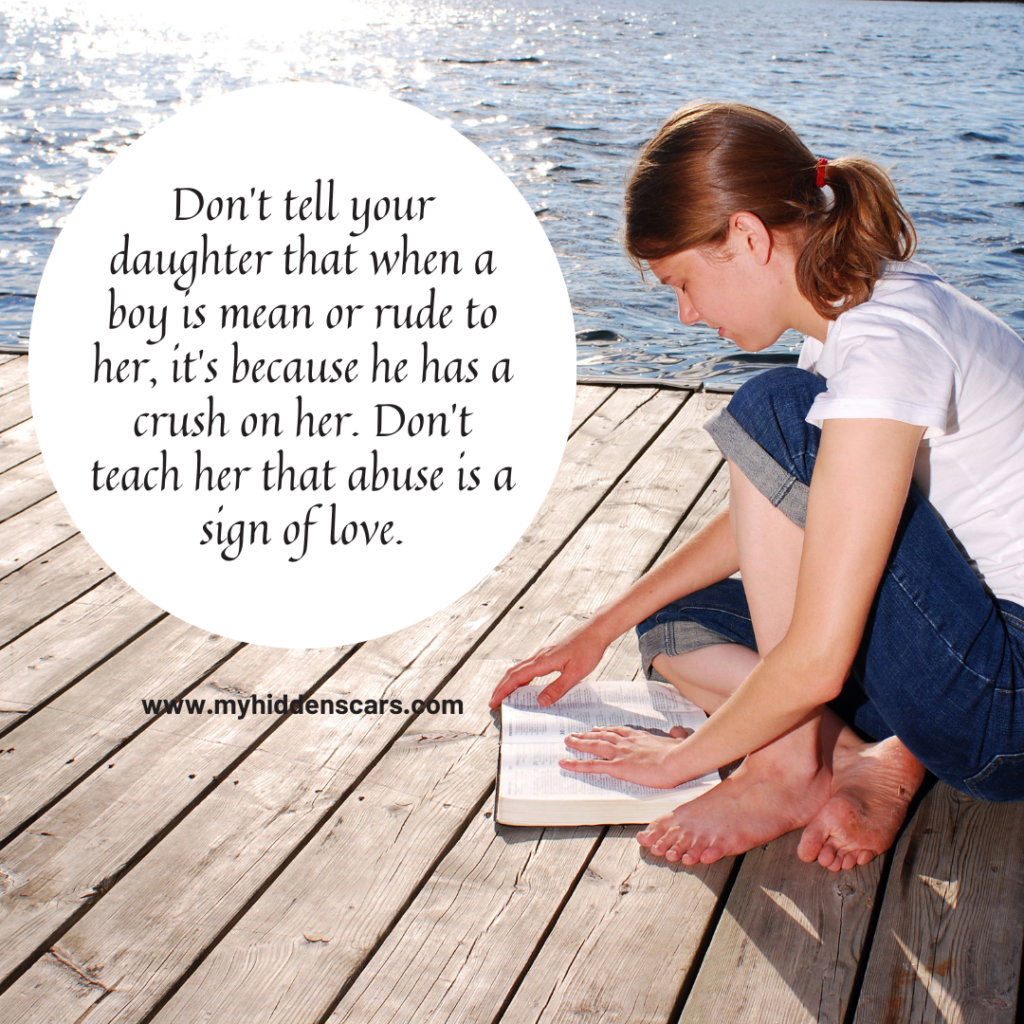As someone who has navigated the turbulent waters of an abusive relationship that began in my teen years, transitioning into my early 20s with my college sweetheart, I’ve come to realize the profound impact that early exposure to such dynamics can have on an individual. This early encounter with teen dating violence laid the groundwork for what would evolve into a more complex web of control and manipulation. Our relationship, which started with shared classes, swim meets, and even jobs, blossomed from youthful romance into a five-year rollercoaster of highs and lows, culminating in a marriage proposal that led to two decades of life together. On the surface, our life seemed idyllic, but beneath the veneer of perfection lurked a reality marred by control, manipulation, and what I now understand to be narcissistic abuse. This journey has illuminated the critical need for awareness and intervention in teen dating violence to prevent its escalation into adult abusive relationships.
For years, I grappled with the uneasy feeling that the subtle put-downs, discreet pinches, and gradual isolation from loved ones were not merely a relationship’s normal ups and downs. The journey to recognizing these experiences for what they were—signs of abuse—was long and fraught with self-doubt. It was only through the support of a fantastic therapist that I was able to see the truth of my situation and begin the process of healing and reclaiming my life.
This personal awakening propelled me into the realm of advocacy and coaching, where I now specialize in assisting women through high-conflict divorces and the aftermath of domestic abuse. My mission is to empower others with the knowledge and tools needed to recognize the early signs of abuse, escape harmful situations, and rebuild their lives on the foundation of respect and true partnership.
Today, I stand before you—both as a survivor and a professional—eager to share my insights into the often subtle indicators of teen dating violence. With alarming statistics indicating that 1 in 11 girls and 1 in 15 boys in high school report experiencing physical abuse in their relationships, the urgency of addressing this issue cannot be overstated.
Understanding teen dating violence is a critical step in safeguarding our youth. This knowledge equips them with the means to identify and halt the cycle of abuse, fostering safe and healthy relationships. As we delve into the warning signs, prevention strategies, and intervention measures, my goal is to make sure that our teenagers can experience relationships characterized by mutual respect, understanding, and genuine affection.
Join me on this journey of education and empowerment as we work together to protect our young people from the dangerous effects of dating violence and lay the groundwork for a future where love does not harm.
Teen Dating Violence Statistics
Understanding teen dating violence is needed, and looking at the statistics can provide a starting point. Here’s a shocking fact: every 11th high school girl and every 15th high school boy report physical violence in their dating lives. But it gets worse. Every 9th girl and 36th boy have experienced sexual violence in their relationships. Typically, such violent acts start when the kids are between 12 and 18 years old.
Girls aged between 16-24 are especially vulnerable. They face intimate partner violence at a rate almost three times higher than the national average. In addition, a survey showed that 20.9% of high school girls and 13.4% of high school boys have suffered physical or sexual abuse from a partner.
These figures are a wake-up call, highlighting the urgent need to address this issue in our schools. We need to increase awareness, intervene when necessary, and teach our teens how to prevent such situations. It’s crucial to foster safe and respectful relationships in teenagers’ relationships.

Impact of Teen Dating Violence
Looking at these worrying figures, it becomes essential to understand the depth of the effect such violence has on teenagers. It’s not just about the immediate damage; it also sets an unhealthy pattern for future relationships. Victims may find it hard to trust others and could face emotional distress that lasts well beyond their teen years.
This early exposure to violence could potentially result in lasting psychological issues like anxiety, depression, or even post-traumatic stress disorder. Young women, especially those between the ages of 16 and 24, are at a significant risk, experiencing partner violence at nearly three times the national average. In our tech-savvy era, a disturbing 25% of teens face abuse in their online dating experiences, introducing another dimension to this problem.
The seriousness and widespread nature of teen dating violence can’t be overstated.
Warning Signs to Watch Out For
It’s important that all of us – friends, parents, grandparents, and teachers – recognize the warning signs of violent behavior and even hidden behaviors in teen dating. Spotting these signs early can help us prevent and hopefully intervene before it becomes to late. Watch for unusual behavior changes like becoming antisocial or showing signs of sadness or worry. A sudden drop in grades or losing interest in hobbies they once loved can also be alarming signs.
If your teenager seems to be overly focused on their partner’s feelings and needs, neglecting their own, this could be a cause for concern. An increase in text messages and phone calls or controlling behavior, especially if it’s cutting your teenager off from their other friendships, are additional signs to look out for.
Being aware and taking early action can help in stopping teen dating violence. Let’s protect our teenagers from such harm.

Understanding Different Types of Abuse
To protect our teens from the dangerous effects of dating violence, we need to understand the different types of abuse that often happen. Physical abuse is one form, and it involves any act of violence or threat of violence, such as punching or pushing. But it can also be hidden, like pinching or a hard slap on the butt.
There is sexual abuse, where the teen is forced or tricked into unwanted sexual acts. There’s also the method of control and isolation, where the abuser limits the victim’s social life and keeps an eye on their every move.
And we can’t ignore digital abuse. This includes online bullying, invasion of privacy, and using digital platforms to control the victim. By knowing more about these types of abuse, we can better prepare our teens to foster safe relationships.
Emotional and Psychological Abuse Explained
Emotional and psychological abuse in teenage relationships is a pressing issue that needs to be addressed. It may take many forms, including relentless criticism and demeaning behavior, significantly damaging a teen’s self-confidence and mental health.
Manipulation, particularly through gaslighting, is another harmful strategy where a person is led to doubt their own perception and thoughts. This subtle behavior can have a significant impact on a teenager’s mental health.
Emotional and psychological abuse may involve isolating the victim from their support network of friends and family, leading to feelings of loneliness and potential depression. In some situations, the abuser might threaten self-harm or suicide to gain control over the victim, instilling fear and establishing dominance.
Understanding this kind of abuse is important because it’s not always easy to see. Even though it might be quiet or hidden, being hurt emotionally or through words can really affect a teenager’s feelings and mental health for a long time. It’s important to know that this kind of harm, even if it doesn’t leave any physical marks, can make a big difference in how they feel about themselves and how they grow emotionally and can cause lasting mental health problems. Recognizing and dealing with this issue is key to helping teens who have been abused get the help they need to feel better and get out of the relationship.
Unmasking Control and Isolation Tactics
Control and isolation are subtle yet powerful tools that are often used in teenage dating abusive relationships. Even though the rest of the world can see these strategies, they can cause severe emotional distress. They are meant to trap and isolate the victim, leading to feelings of loneliness. This is often quiet and insidious. For example, an abusive partner might set strict boundaries on the people the teen is allowed to see, talk to, or hang out with; the places they are allowed to go are limited by the abuser, and they may even dictate what they can and cannot wear. An abuser may monitor the teen’s every move by watching them on “Life360”, keeping a constant watch over their interactions and locations, and creating a situation where they feel stuck without anything physically stopping them. This form of manipulation is designed to exert power and control, stripping the victim of their autonomy and freedom, and can deeply impact one’s sense of self and well-being.
Recognizing these tactics is important for parents to understand because it makes it difficult for the victim to get help or escape the abusive situation. One of the most important things is that it is so important for teens to understand that this isn’t a sign of love but a means to control. Seeing these signs early is key. If you or your teen find yourself always doubting your choices due to your partner’s responses, it’s a sign of control. This also goes for feeling cut off from your social circle, like friends and family; it is an intentional way to make your support network smaller or even non-existent. It’s important to identify these signs, question them, and seek assistance.

Recognizing Physical and Sexual Abuse
Knowing about physical and sexual abuse in relationships for teenagers is important. Physical abuse could show up as unexplained bruises, from things like pinching or a slap on the bottom out of “love,” or if the teen starts acting differently, maybe because they’re scared of what the abuser might do next. Sexual abuse might not be as easy to see. It can be someone being forced to do sexual things they don’t want to, not respecting personal boundaries, or tricking someone into sexual activities and even too much public display of affection.
Studies show that going through this kind of abuse early on can cause significant problems later in life. Teen girls, especially those aged 16 to 24, are at a higher risk. It’s super important to spot these signs early. Understanding and seeing these signs is the first step to stop these kinds of abuse from happening.
Digital Abuse in Teen Relationships
In today’s world full of smartphones and social media, it’s shocking that 1 out of 4 teens face cyber-dating abuse. This kind of online abuse might not get a lot of spotlight but it’s really hurtful in sneaky ways. Digital abuse can happen through creepy behavior like constantly texting someone to know where they are, embarrassing someone on the internet, or sharing private photos without permission. This can hurt teens for a long time and teach them the wrong idea about what’s okay in relationships.
Talking to teens about the dangers of being mean or harmful online is important. Schools and families should work together to teach teens about being kind and respectful online and why asking for permission before sharing anything personal is a big deal. Knowing about this helps make the internet a safer place for chatting and sharing.
It is also important to make sure teens have a way or a place to talk about it if someone is being harmful to them online.

Encouraging Positive Connections Between Teens and Adults
Building strong relationships between teens and adults, like parents, teachers, or even grandparents, is more than just a good idea—it’s essential for learning life’s deeper lessons. When teens and adults truly connect, it opens the door for sharing valuable experiences and wisdom, which can help navigate personal and social challenges. Both teens and adults need to engage in open conversations and show mutual respect. These lay the groundwork for important connections that benefit everyone.
Having an open conversation and mutual respect between age groups sets the foundation for meaningful interactions that can improve everyone’s lives, now and in the future. Research supports the idea that teenagers who have strong, positive relationships with adults often see improvements in their social skills and develop a greater capacity for empathy. By bridging the generational gap, we can address and dismantle misconceptions and communication barriers and strengthen understanding and cooperation.
Fostering these relationships isn’t solely about preventing negative behaviors but creating a community founded on respect and understanding. It involves a reciprocal effort: teens can gain invaluable insights from adults’ life experiences, while adults can learn from the fresh perspectives and ideas of the younger generation. By embracing this approach, we can create a place where every voice is heard, respected, and valued.
Conclusion
Teen dating violence is a critical issue that we cannot afford to ignore. As adults—be it parents, teachers, coaches, or advocates—our role in addressing this problem is paramount. Speaking from a place of deep personal understanding, as a coach who works with women who have been through abuse and as someone who has survived domestic abuse starting in my early 20s, I bring a perspective that is both professional and deeply personal.
Our young people need to be armed with the right knowledge and tools to navigate their relationships safely. They need to recognize what abuse entails, including the subtler signs and more overt acts of violence. Understanding the red flags of unhealthy behavior and the importance of fostering respectful, supportive connections is crucial. This knowledge doesn’t just help in preventing dating violence; it’s fundamental for ensuring their safety and emotional well-being.
But imparting information is just one facet of our responsibility. It is equally important to create an environment where teens feel safe to share their feelings and experiences. By encouraging open dialogue, delivering effective education, and stepping in when necessary, we have the power to interrupt the cycle of dating violence.
Drawing from my own journey of overcoming abuse, I know firsthand the profound impact that early experiences of violence can have on a person’s life. This understanding fuels my commitment to prevention and underscores the importance of our role. Addressing teen dating violence is more than a preventive measure; it’s an investment in our children’s future, laying the groundwork for them to build healthy, respectful relationships that last a lifetime. It’s a collective responsibility, and by joining forces, we can make a lasting difference in the lives of our teenagers.





[…] first talk went better than I could have imagined. I shared my story with a group of women, some of whom I had […]